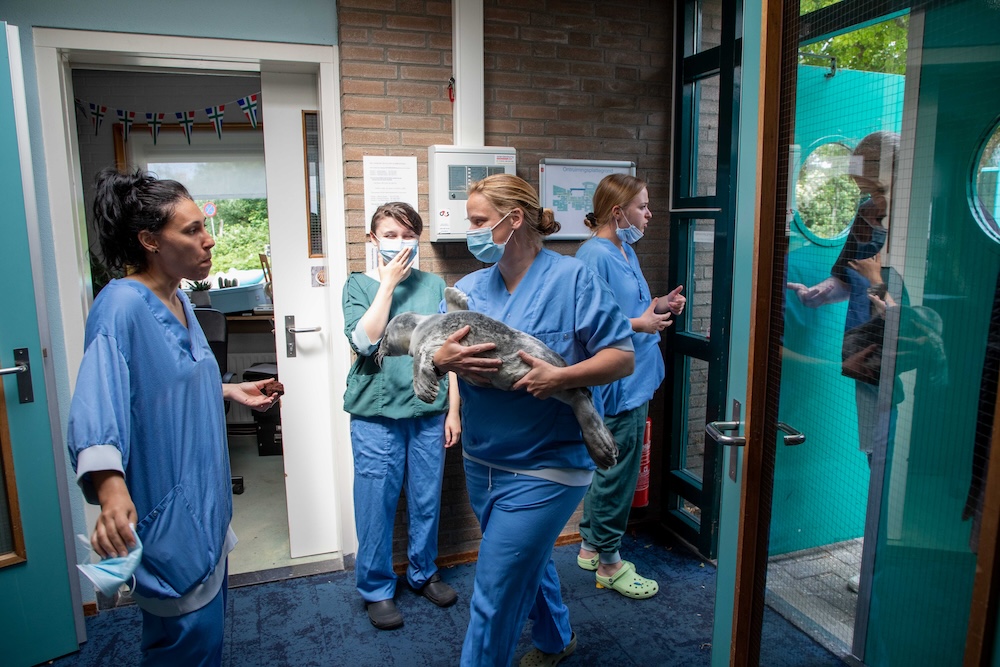
Signed, Sealed, Delivered
Signed, Sealed, Delivered
Seal pup, now named Marcel, was picked up by a local and was brought to the Pieterburen Research and Rehabilitation Centre in his own car – Even though only trained seal guards are allowed to pick up and transport seals.
The degree of disturbance was so severe, that it was not possible to return Marcel to the spot he was found. The Pieterburen staff decided to take him in.

The project „Sealed Signed Delivered“ shows the daily chores of the animal attendants, seal nurses and volunteers and all of the other staff of the „Zeehonden Centrum“ in Pieterburen, Netherlands.
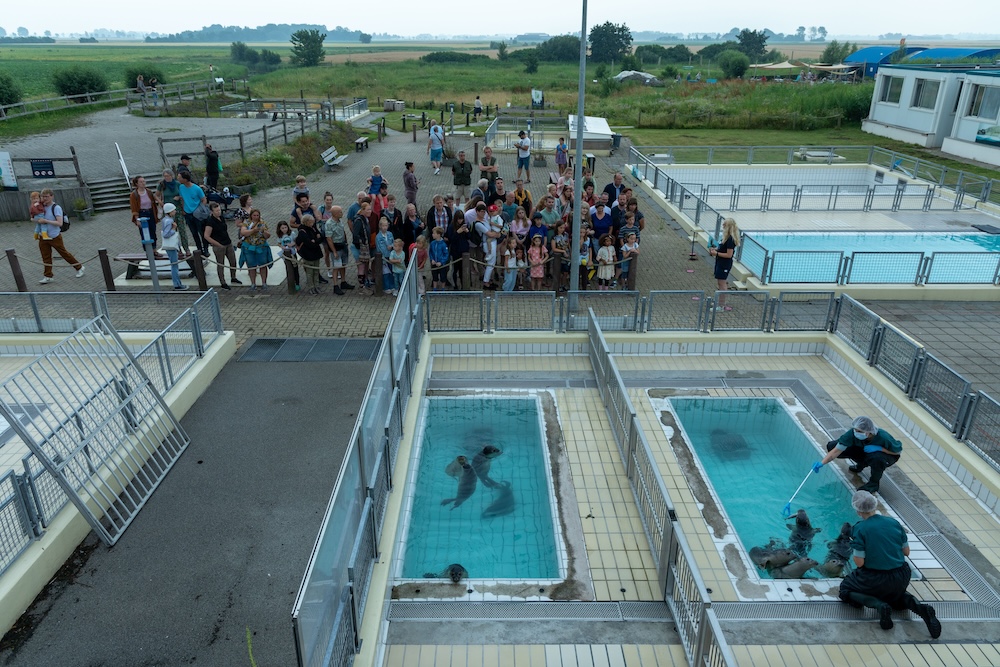
The Seal Rehabilitation and Research Centre is located in Pieterburen, Netherlands. It was founded in 1971 by the controversial animal rights activist Leni’t Hart.
Originally, her plan was to treat howlers only. Over the years, the center broadened its focus and implemented a scientifically based policy which among others supports medical treatment for grown up seals. Due to disapproval of the new policy and several interventions, she had to drop out of the center.
During the intake procedure, the new pups are thoroughly examined. They are weighed, their gender determined, their teeth are checked, and blood samples are taken.
Also, the seals are photographed for the website and social media, to encourage donations and symbolic adoptions from the visitors.
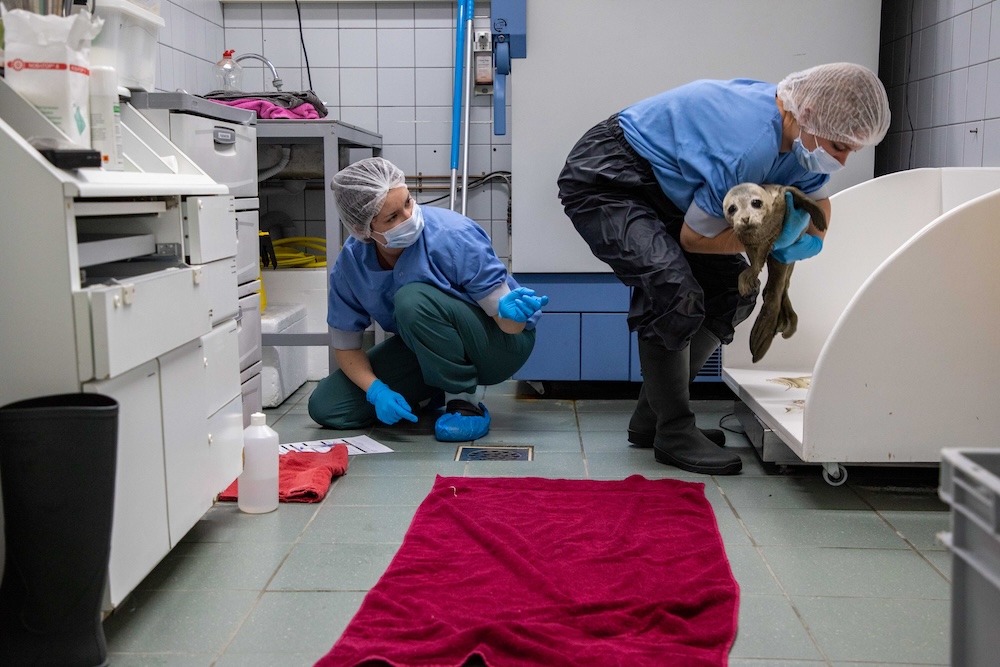
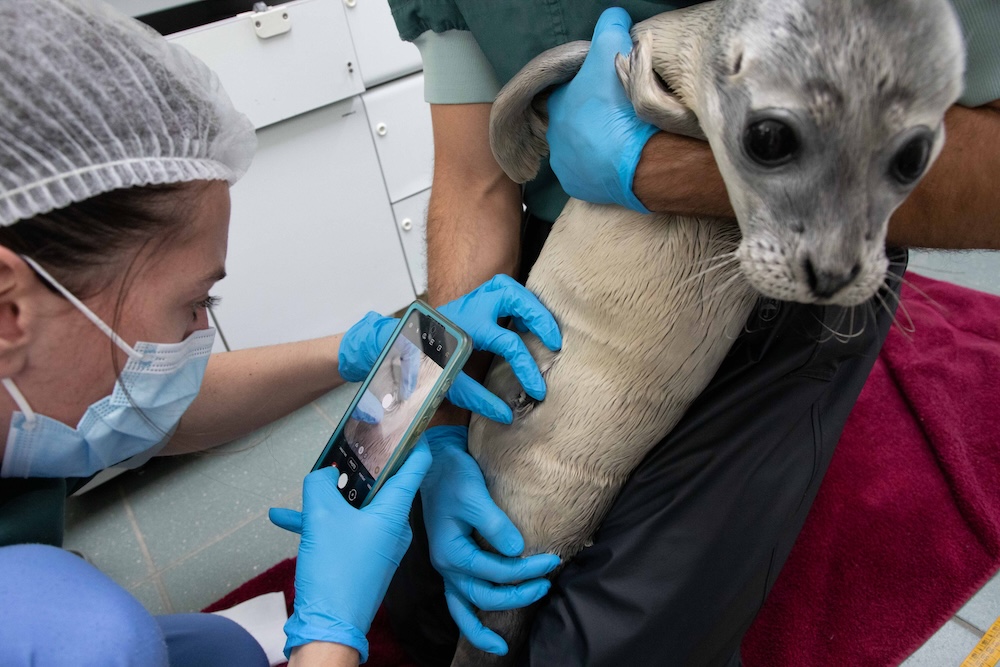
One of the most important rules for taking in baby seals is as follows: Right after the belly button check, the howler must immediately receive its feeding. This way, seal nurses only hold the wild animal once and thus reduce its stress level to a minimum.
Apart from the obvious love for animals, the concept of a „healthy Wadden Sea“ and the protection of its environment are main goals why people work in the research and rehabilitation center.
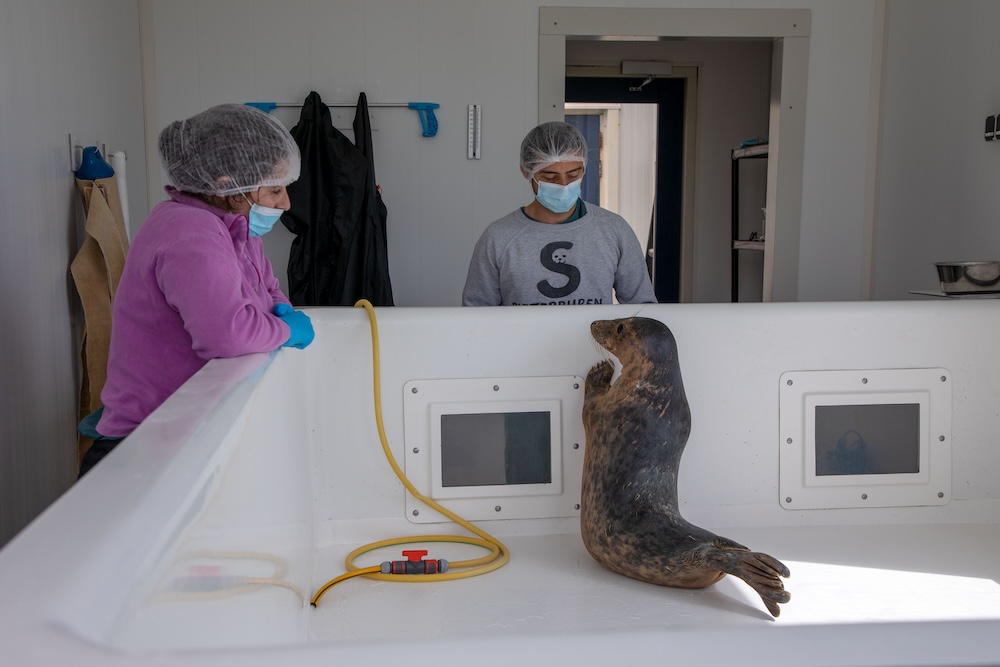
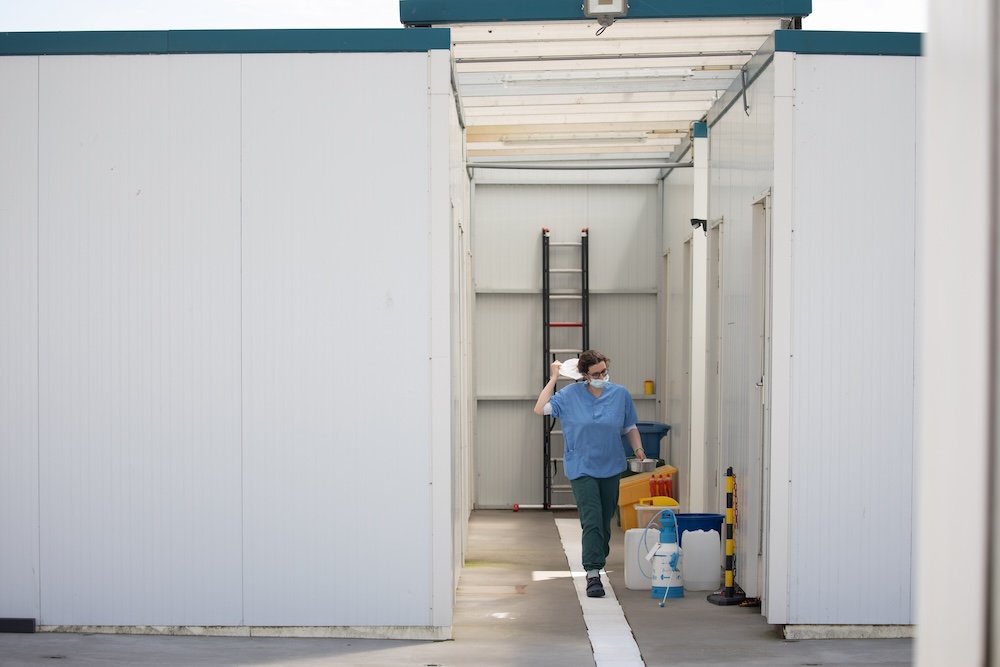
The employees of the Zeehondencentrum Pieterburen have a tradition of „showering“ their colleagues during their last working days at the center. It can happen everywhere: in the kitchen, in or around seal pools or simply outside.
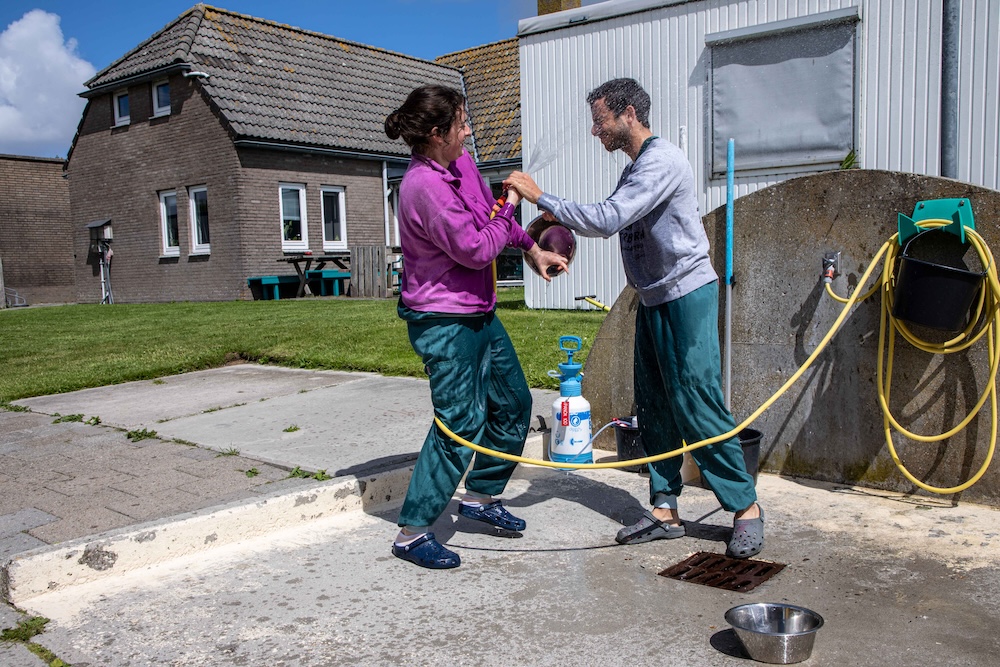
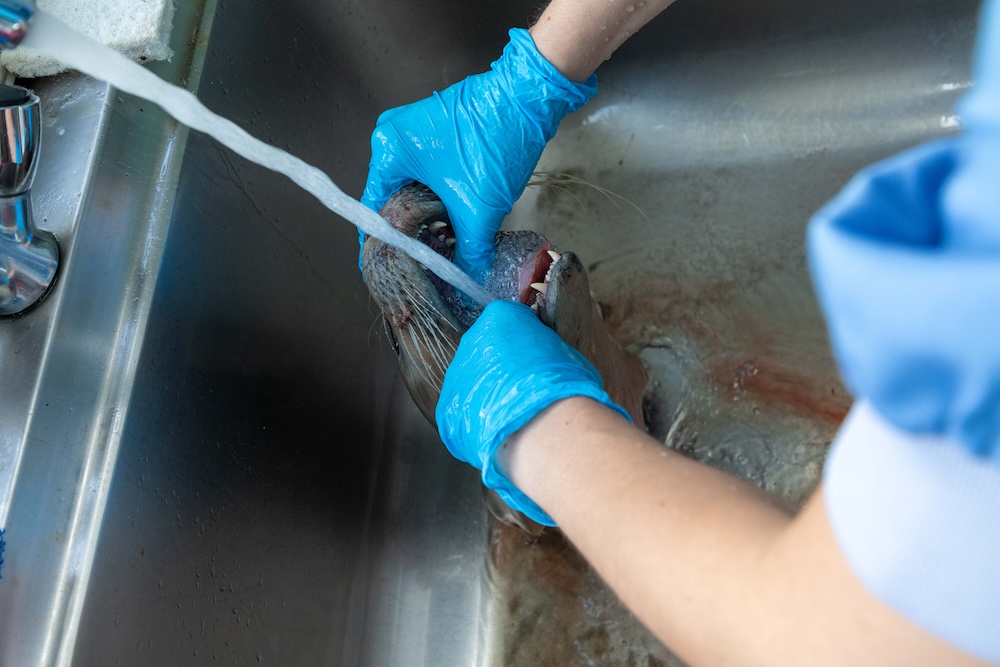
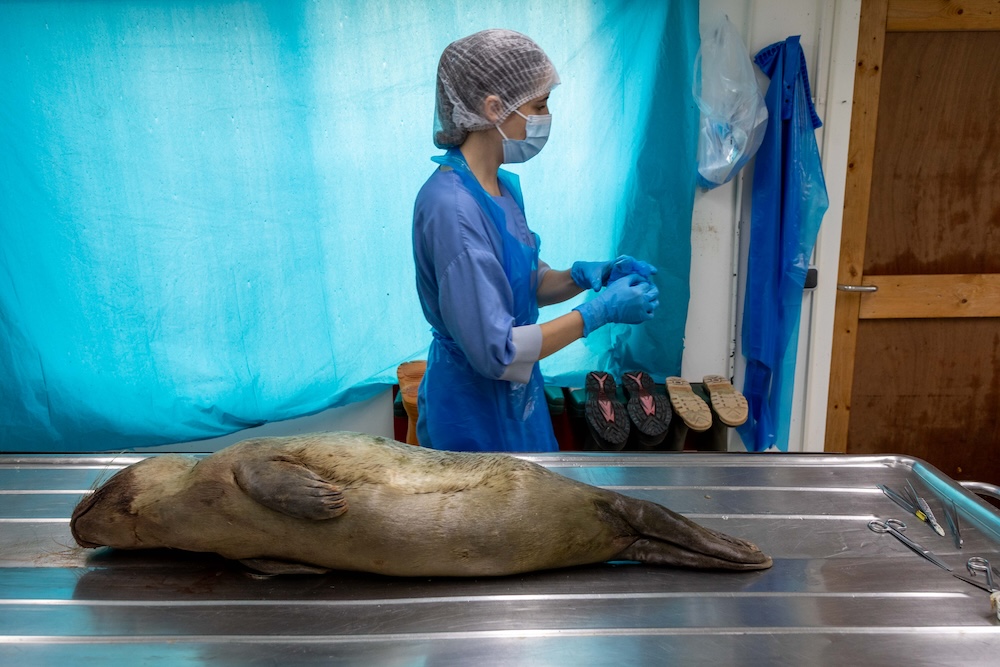


Bild 1
A necropsy of a seal that was found on the Dutch coast some months ago and that most probably died of natural causes.
First steps of this procedure are weighting, measuring, examine the seal externally and document the results. It is important to find out why exactly the seal died.
Bild 2
This necropsy is special, since in this case, the head is of strong interest for the researcher. Therefore, this seal corpse has to be decapitated in order for its vocal tract to be thoroughly examined.
Bild 2
Bild 3
Seals are one of the few mammals that can repeat and reproduce sounds – very much like humans. A fact, that is of great value for the researchers.
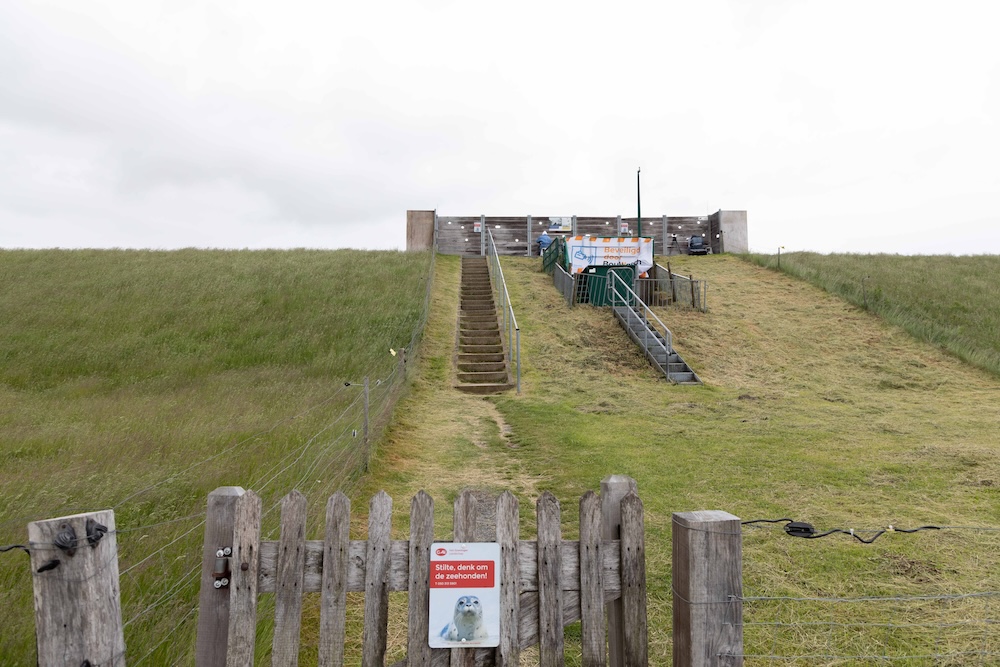
Every year, from end of May to mid-July, a scientific team drives 100 kilometers daily from Pieterburen to Dollard and back. The team dedicates its research to the behavior of mother and baby seals.
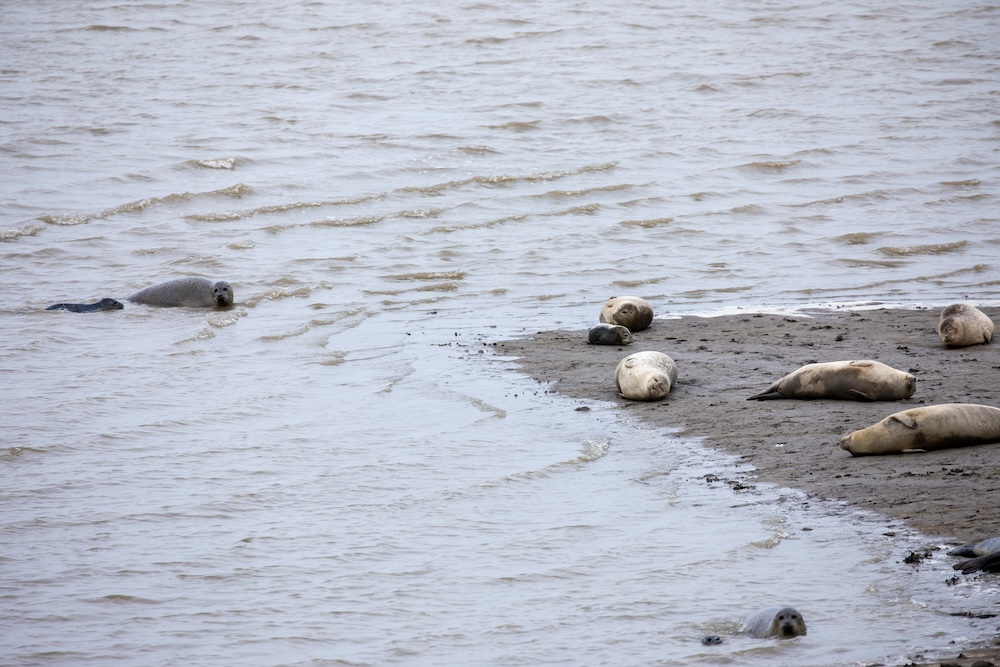
The goal is not only to show how many hands are needed in order to take care of one seal. Also, the project aims to highlight how diverse and humorous the work at the seal center can be.
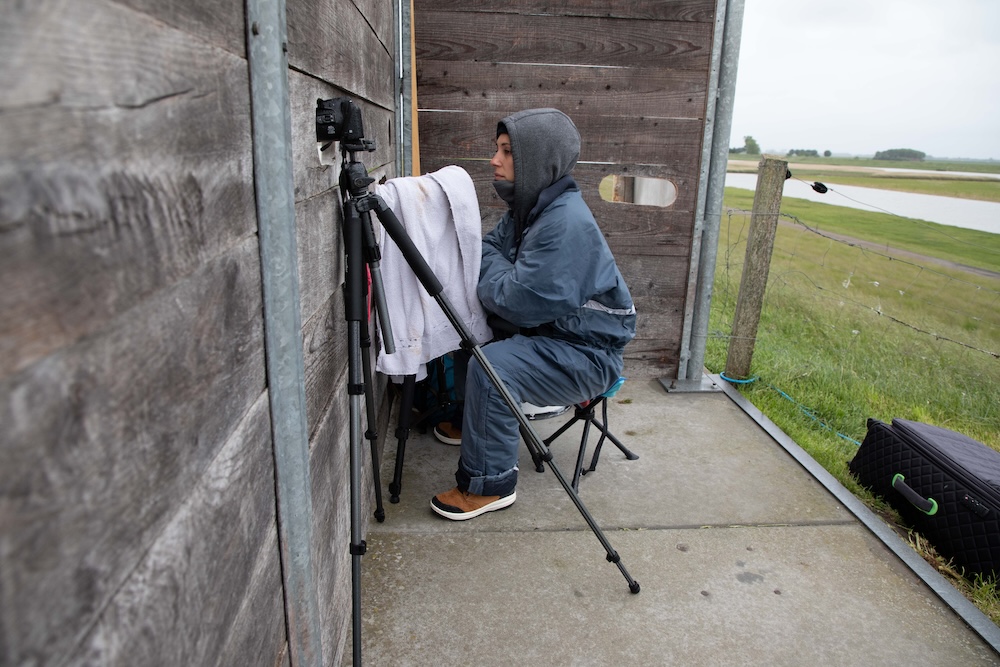
For continuous recognition, researchers photograph the seals and catalog the images using a special photo ID tool.
Tagging the animals with animal spray paint is no option, even though it would make the identification process easier. One of the main reasons for this is the strong disturbance of the animals while tagging. This can lead to a change in behavior and thus influence the results of the studies.
The Zeehondencentrum team is very diverse in terms of country of origin, mother tongue, working title and experience of the staff. People of different ages, backgrounds, education and personalities – in short – people from all over the world are working here.
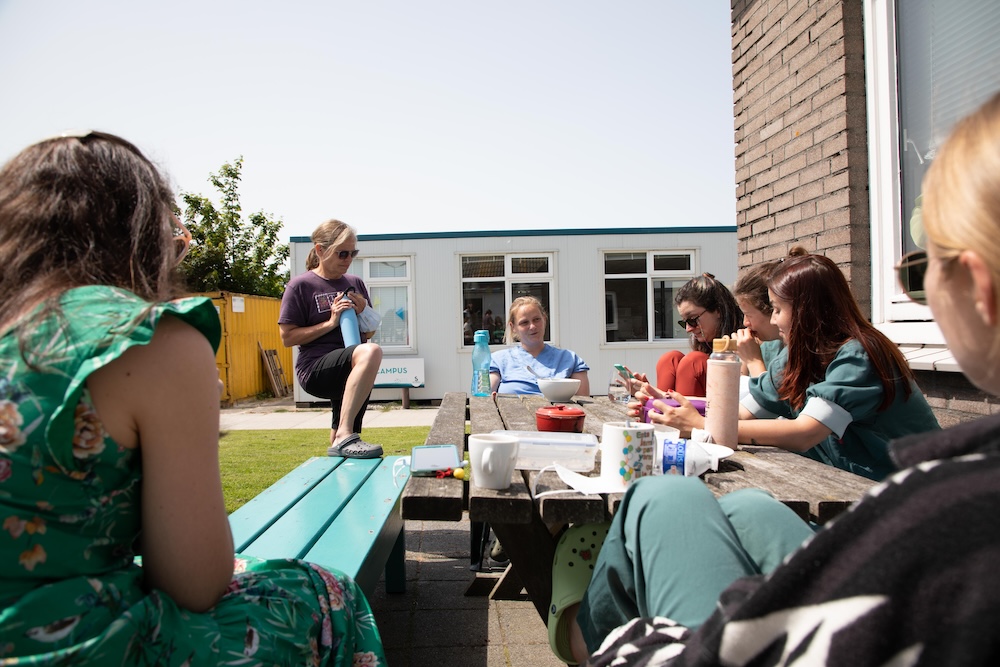
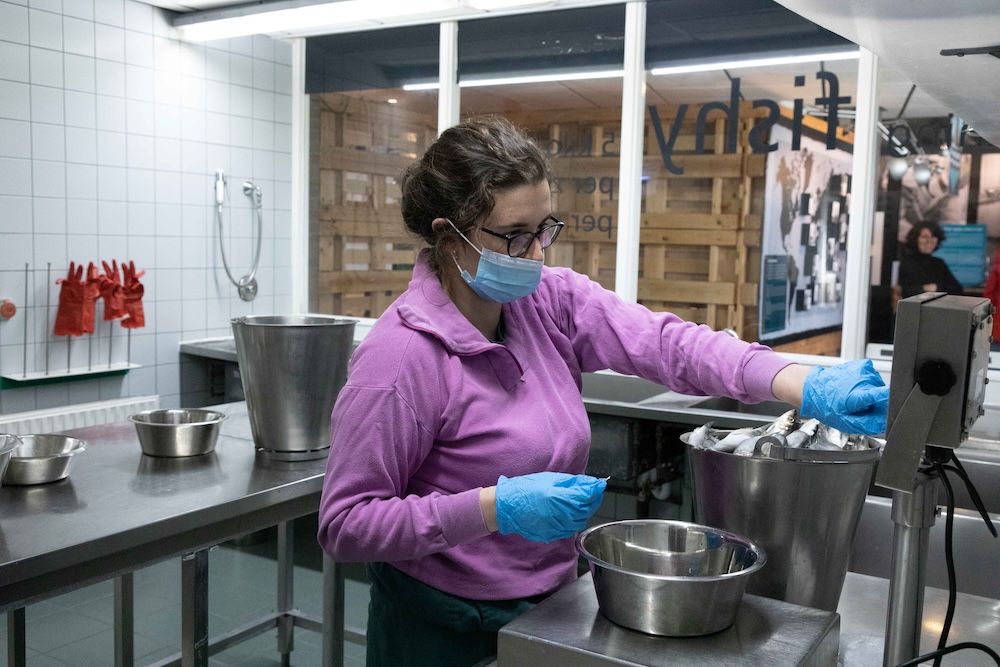
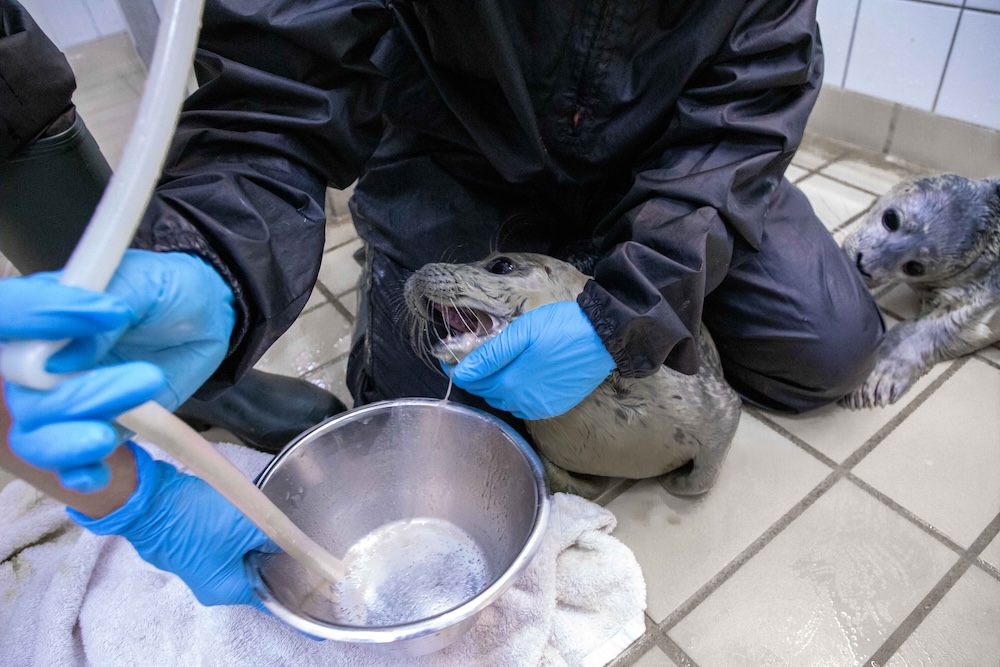
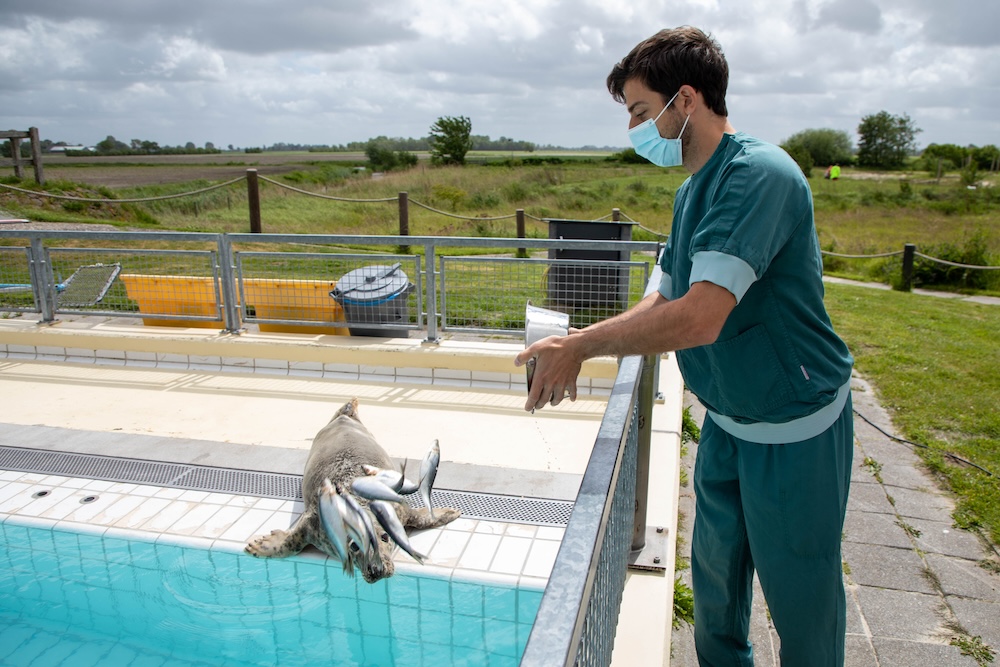
Vittoria, a female grey seal of 20 years (about 70 in human years) has been at the seal center for almost fifty days now. When she arrived, she weighed less than 90 kilograms which is extremely underweight. Now she is steadily increasing. This is important because a female gray seal her age should weight around 150 kilograms.
Mr. Whiskers is captured for his final health checks and vaccinations. He is about to leave the Zeehonden Centrum.
However, he is not fed before being released. The idea behind this is that hunger most probably will trigger his instincts faster and urge him to catch some fish in the wilderness on his own.
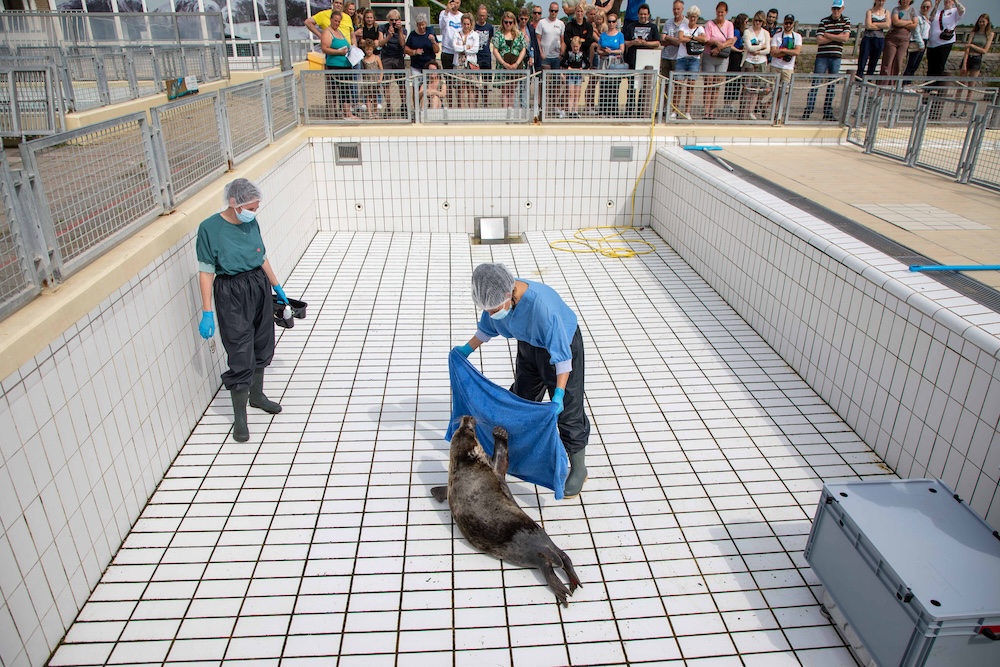
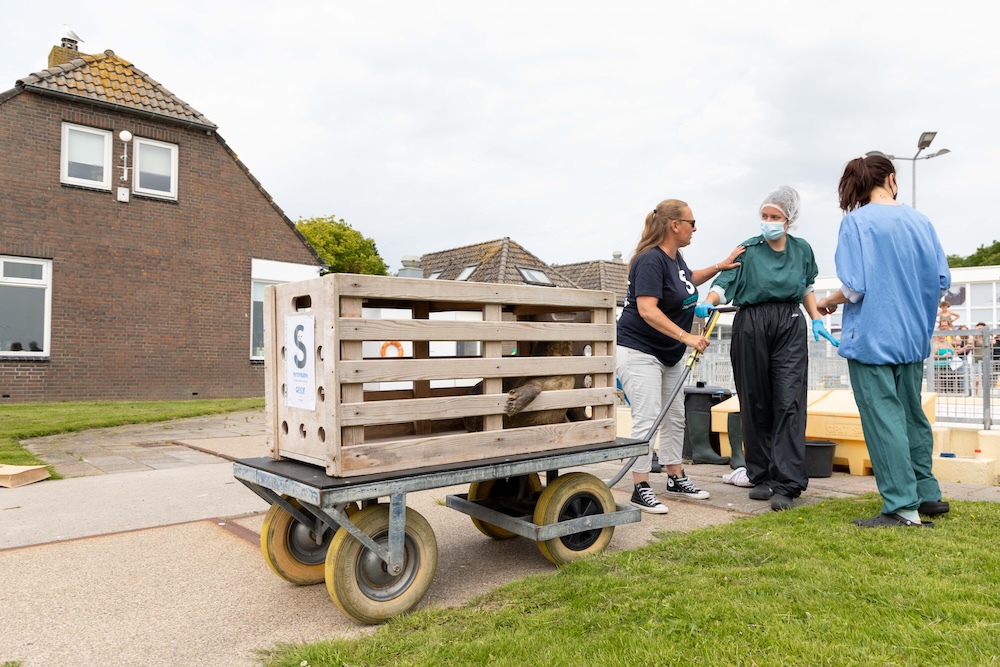
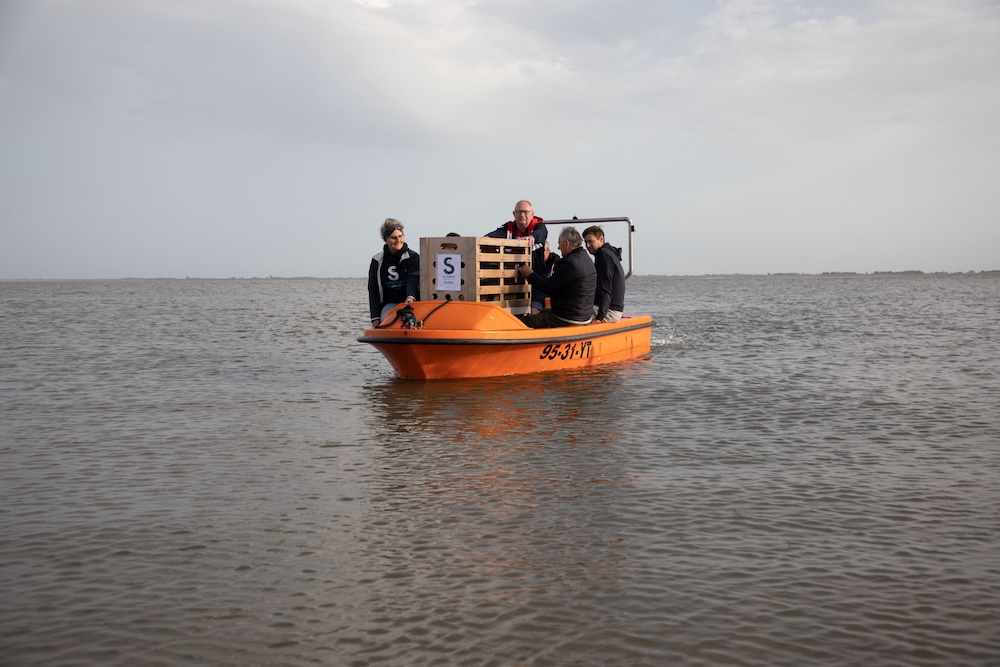
The strip of sand the boat is heading to is about one square kilometer long. During high tide it is almost completely covered by water.
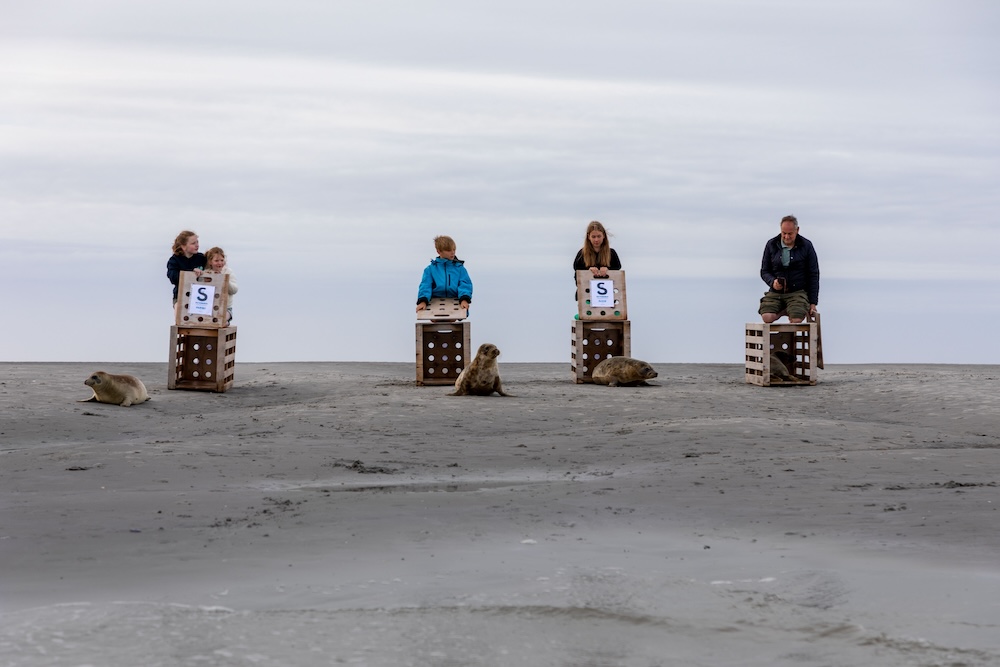
All four seals are strengthened enough and are released into their natural habitat by a small group of people consisting of the Zeehonden Centrum staff, symbolic adoptive parents who open the seals‘ boxes and other visitors of the center.
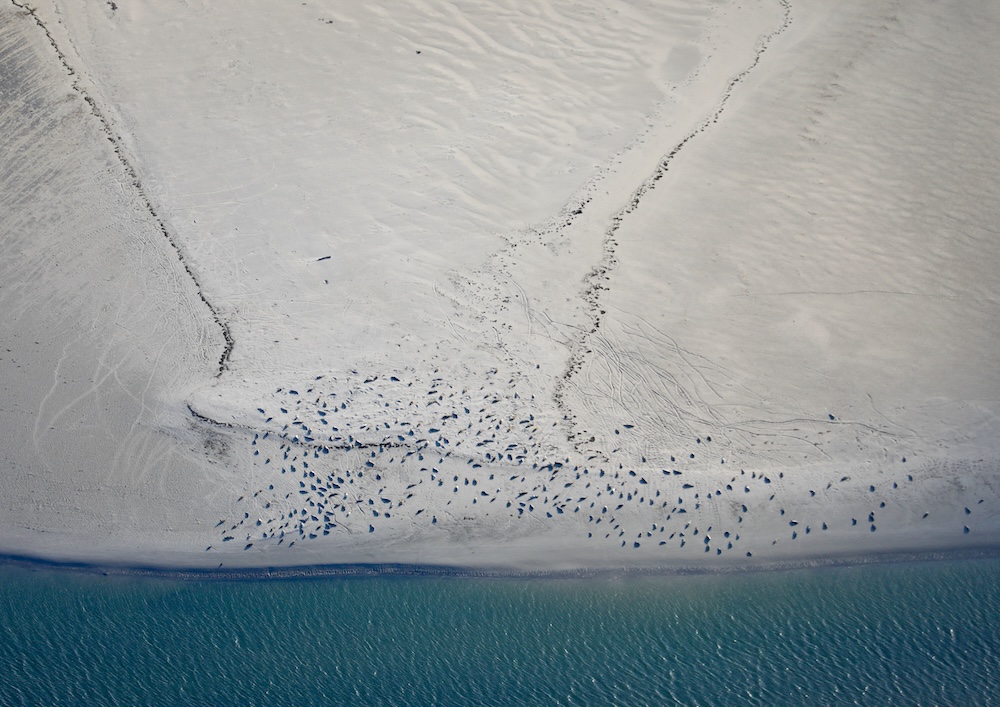
Sandbanks, sand or gravel sedimentations, are important refuges for migratory birds and seals in the Wadden Sea. They congregate on it to rest, give birth, or nest.
